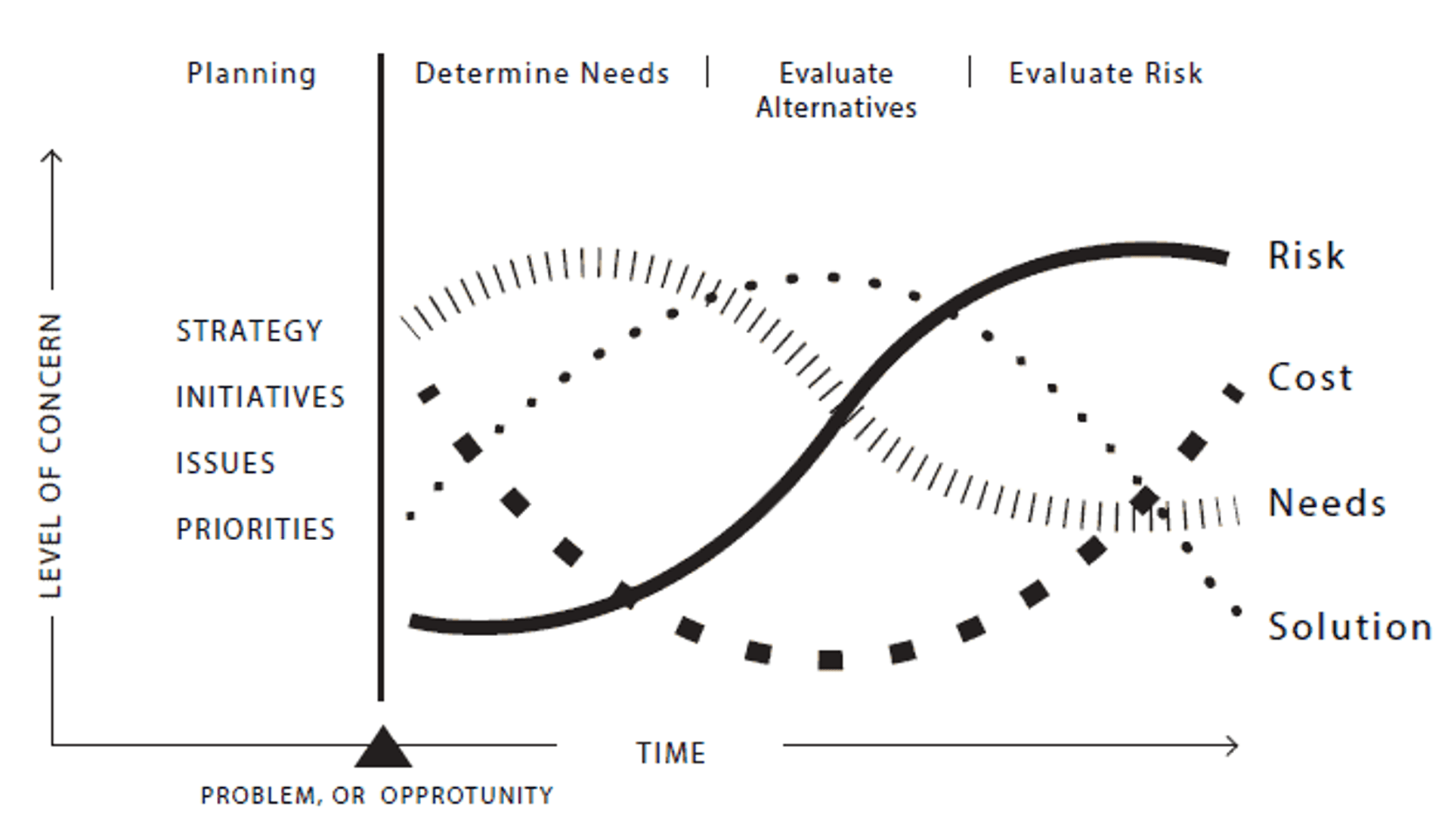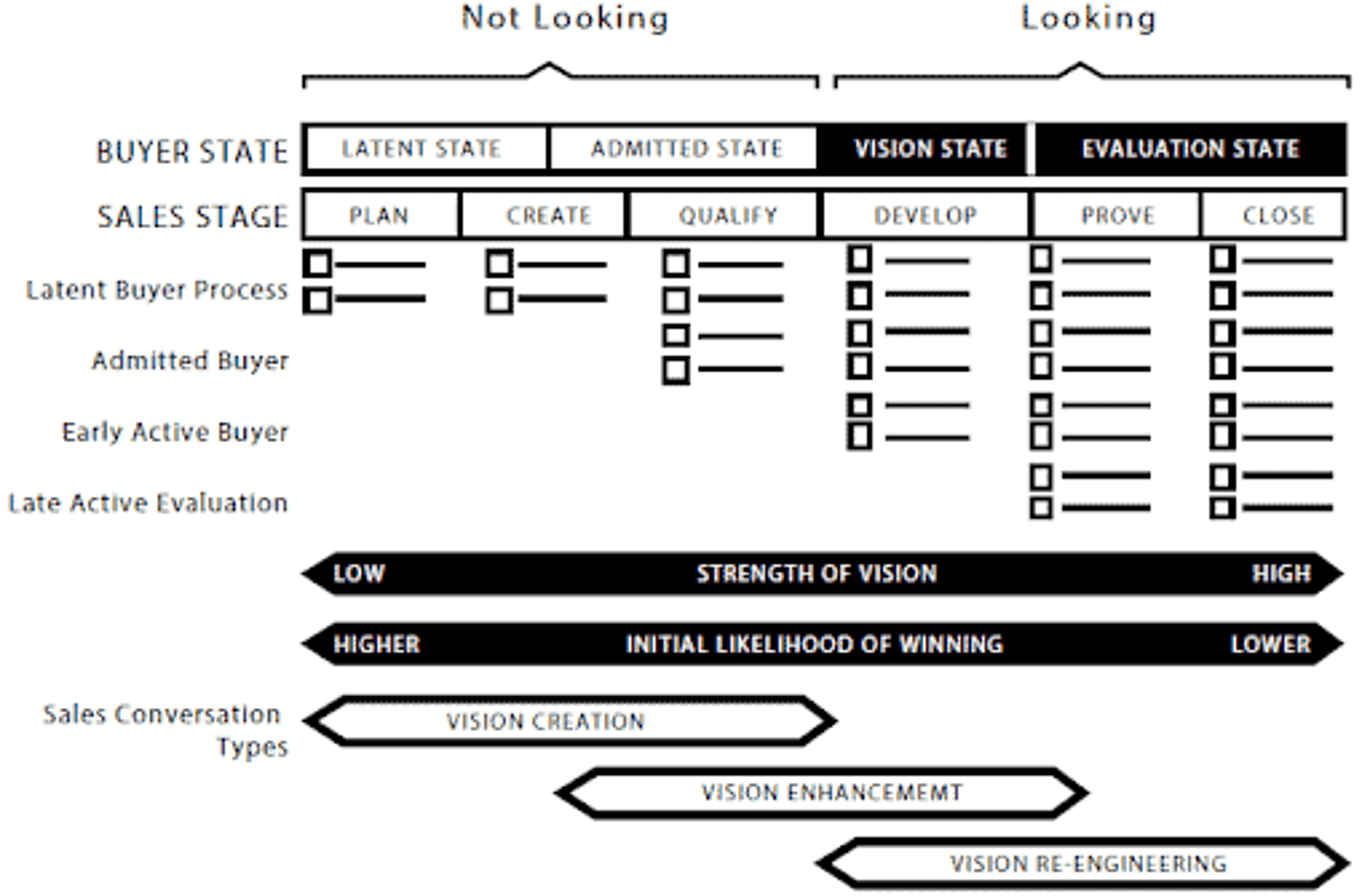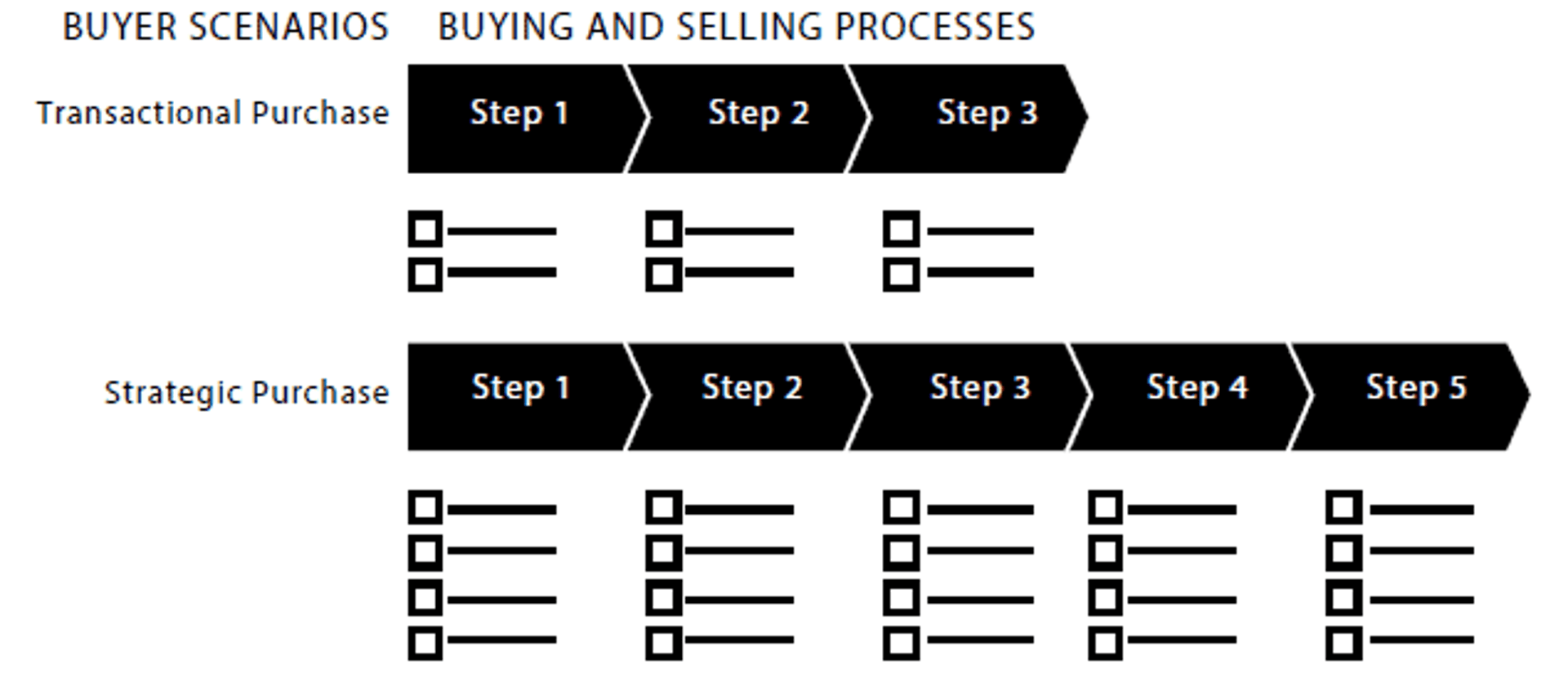The Importance Of Buyer Journey Alignment

When buyers make a purchase decision, whether they do so individually or as part of an organization, they do not do so randomly. Though emotion certainly plays a part in every decision to buy, people generally follow a rational pattern of behavior as they investigate, evaluate and select solutions to enhance their lives or the performance of their organization. This pattern is often called the buyer’s journey. Understanding and aligning with buyers as they progress on their journey is an essential competency for sales professionals, and a principal determinant of their individual success.
No matter what buyers are thinking about purchasing, they invariably go through multiple buying phases during their buying journey, and their concerns vary in importance as they progress through each phase.
The Four Stages of the Buyer Journey
The four stages of the buyer journey are:
- Planning
- Determining Needs
- Evaluating Alternatives
- Evaluating Risk

Most buying journeys begin after some form of analysis or planning takes place, when buyers become aware of problems or potential opportunities that need to be addressed. After recognizing a problem or opportunity, buyers enter into the Determine Needs phase, where they are most concerned with identifying what is needed to address the issue and the potential cost or investment required to acquire what is needed. Once their needs are defined and possible costs are determined (at least informally), they enter into the Evaluate Alternatives phase of their buying journey, where they examine and compare different alternatives that could meet their requirements and spending expectations. Near the end of their buying process, after they’ve evaluated alternatives, they enter the Evaluate Risk phase of their buying journey, where they try to understand the level of risk in making a purchase decision. In this last phase, the cost or price of making a commitment once again becomes important in the minds of buyers.
These psychological buying phases — Determining Needs, Evaluating Alternatives, and Evaluating Risk — may happen very quickly for low-risk transactional purchases, or take much longer for higher risk, larger or more important purchase decisions.
For example, something as trivial as buying a box of mints in the supermarket may simply be a question of deciding what type of mint might be most desired, looking at the different alternatives on the shelf for the closest fit, and then deciding if you have enough cash to make the purchase. This journey may take only a few seconds to complete.
For larger or more important purchases, the journey will take much longer. For example, a young couple may decide they’d like to build equity in a house rather than paying rent. Their initial list of needs may include a number of ideal requirements: three bedrooms, safe neighborhood, less than a forty-minute commute to and from work, two-car garage, convenient to shopping, good schools, and so on. They determine what kind of monthly mortgage payment they can afford. Once these criteria have been established, they can then compare and evaluate alternatives.
In the past, this meant contacting a real estate broker for help. Today, however, most home buyers begin their search on the Internet, and conduct their own initial research. They will probably not contact a broker until they have a clear idea of what kind of home they want, and where they’d like it to be.
Many home buyers look at houses that are outside of their original budget. This is normal behavior for people going through the evaluation of alternatives phase, as it costs little other than some time to look at a variety of different options.
Once they have narrowed their choices down, buyers then become concerned about the risks of their buying decision. Our home buyers may ask: Is this the best price for this house? How secure are our jobs? Can we afford this house if something happens to either of us? Can we make the monthly mortgage payments for the next thirty years? Only when they have answers to their questions about risk will our buyers move forward with a purchase commitment. Evaluating risk causes people to slow down their decision-making process, and maybe not make a decision at all.
Why Understanding the Buyer's Journey is Important for Sellers
Sales professionals who understand how their buyers progress on their journeys to a purchase decision, and how they can align with buyers to help them along the way, perform much better than sellers who treat every buyer the same way. Understanding where a buyer is on their journey when a seller first engages with them is a critical skill for sales success.
Nearly nine out of every ten organizations which define a sales process that aligns with buyers’ journeys report significant improvements in business performance, according to a recent survey of more than 1,400 sales executives by CSO Insights. A defined sales process that aligns with their buyers’ journeys enables sellers to collaborate in harmony with buyers’ concerns and help them to buying decisions. These organizations enjoy higher levels of:
- Sales team goal attainment
- Individual sales goal attainment
- Forecast accuracy
- Sales staff turnover reduction
- Adoption and usage of CRM and other sales enablement technology
Buyer-Aligned Sales Process Tied to Verifiable Outcomes
A process is a systematic series of actions, or a series of defined, repeatable steps, intended to achieve a reliable result. When followed, these steps can lead consistently to predictable outcomes.
Automobiles, for example, are assembled using a manufacturing process, as are our clothes, our homes, and even the foods we eat. Each relies on a series of defined steps to ensure quality and consistency. Imagine what our automobiles might look like if they were constructed haphazardly, without an orderly manufacturing process, and how unsafe and unreliable they would be. Similarly, a sales effort without any direction or definition too often leads to unfavorable results—or increasingly, to no result at all.
A sales process that aligns with the buyer journey, however, is different in one important way: it is not an exact science, because it must reflect variants in human behavior. Therefore, progress and success are measured by observed verifiable outcomes, not by the activities executed.
A verifiable outcome is a behavior that validates alignment between a buyer and the seller—and those behaviors are always executed by the buyer, not the seller. Verifiable outcomes can be captured as evidence of progress with a buyer. For example, after an initial meeting with a buyer, a seller can summarize the results of that conversation in an email, sent back to the buyer. The verifiable outcome is how that buyer reacts to that message. Did they confirm the conclusions of the seller and agree to next steps? Or did they amend or change those conclusions? Or did they not react at all? The observed behavior tells the seller the degree to which they are aligning with a buyer on their journey.
Dynamic Sales Process
Salespeople may engage with buyers at any stage of their journey. A well-designed sales process takes this fact into account and provides sellers with the flexibility to align with different buyers at any stage.

In addition, a “one size fits all” sales process is rarely applicable to engaging with modern buyers. Depending on the types of buyers served, the complexity of the solutions sold and the typical length of the buying process, sellers may need to master multiple sales processes, to align with different types of buyer journeys.

Optimally, buyer-aligned sales processes should be designed to cover the most typical buying scenarios, but not every conceivable type. A good rule of thumb is to develop process definitions that ensure alignment for the majority of typical buyer scenarios—more is good, but absolute perfection is not required. Any situations that do not align perfectly with defined processes are, by definition, exceptions, and should be managed accordingly. In fact, defining buyer journey aligned sales processes make the principle of “management by exception” a clear decision, instead of an arbitrary or subjective one.
By understanding their buyers’ journeys, mapping sales process to align with their buyers, and identifying clear verifiable outcomes for each stage, sales professionals can engage with potential customers with confidence. Defining dynamic buyer-aligned sales processes helps sellers to collaborate better with buyers, and therefore, provide greater value. The net result is that sellers can differentiate themselves not only by what they sell, but more importantly, by how they engage with buyers.

White Paper: Embracing The Turns, The New Buyer Journey
DownloadGet industry insights and stay up to date, subscribe to our newsletter.
Joining our community gives you access to weekly thought leadership to help guide your planning for a training initiative, inform your sales strategy, and most importantly, improve your team's performance.






